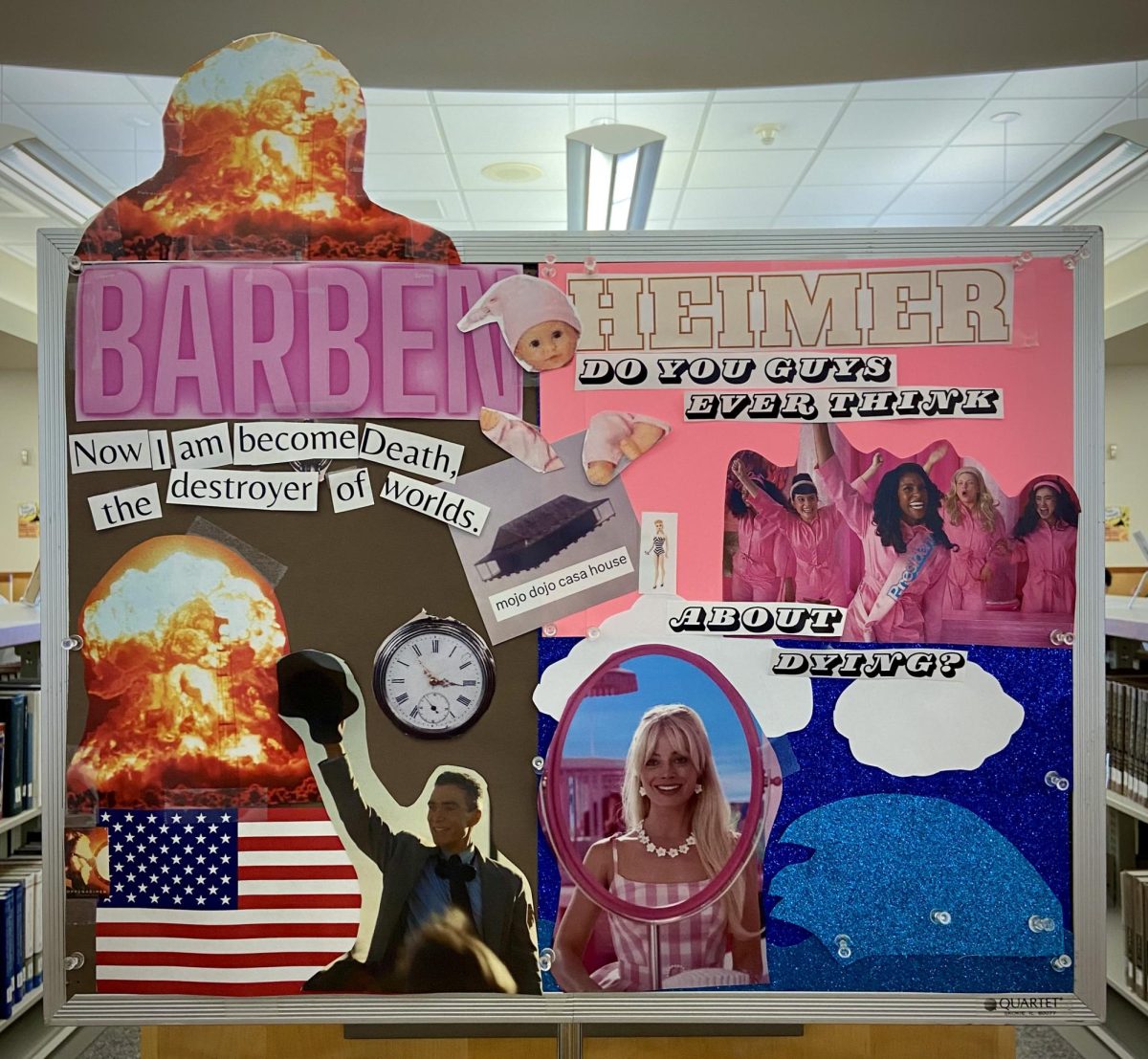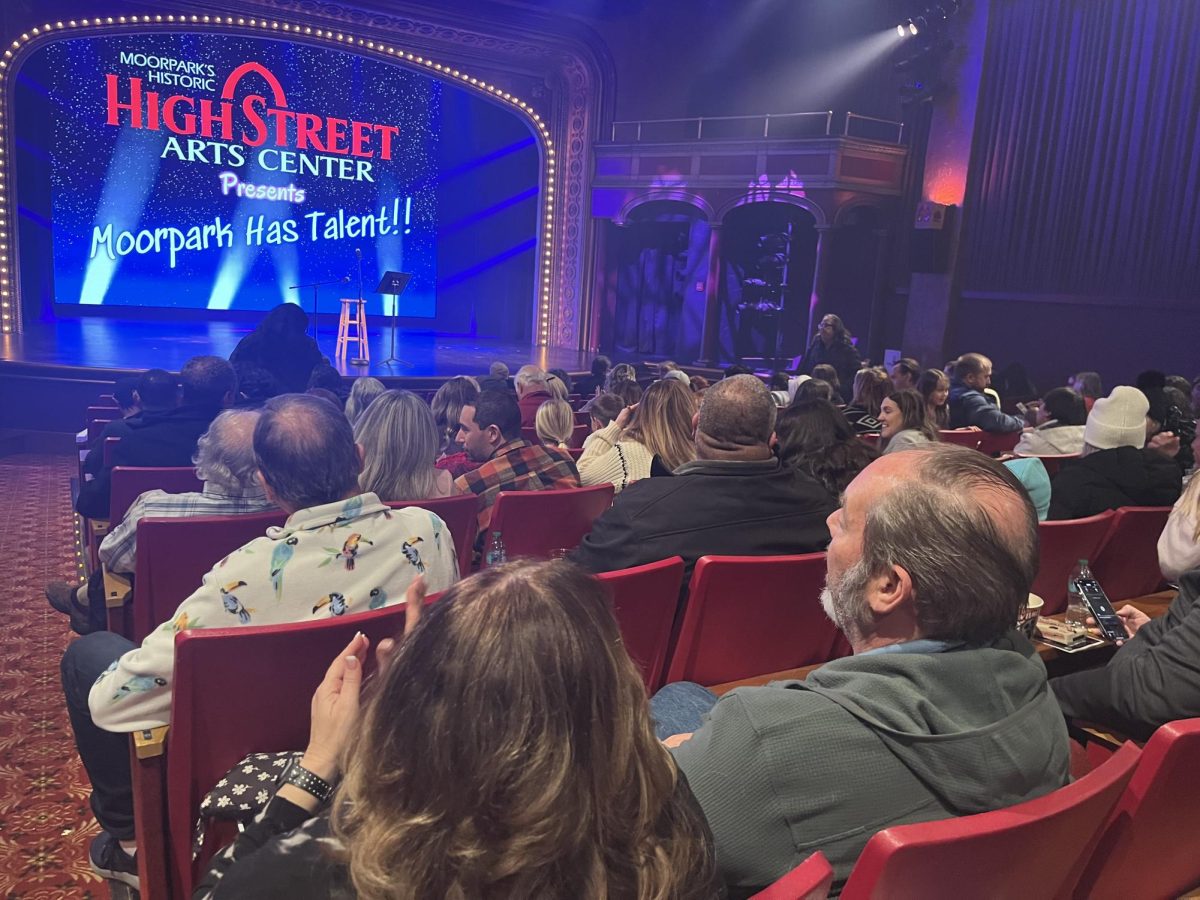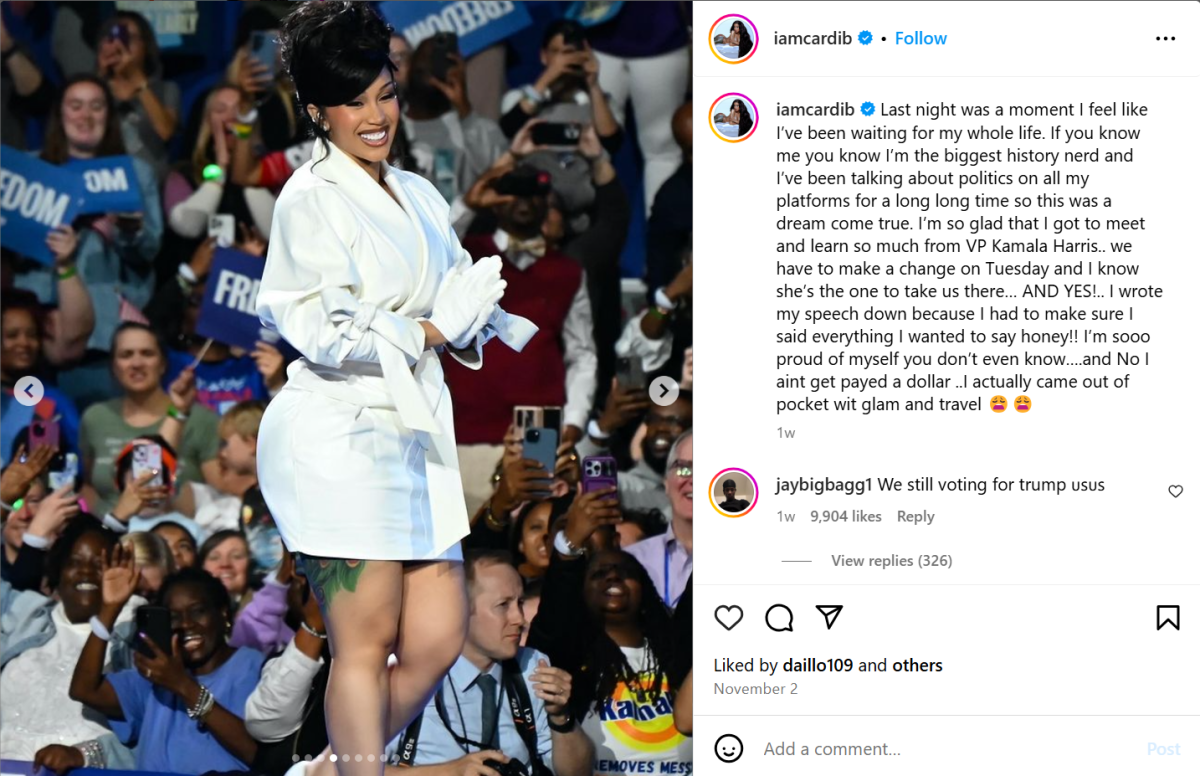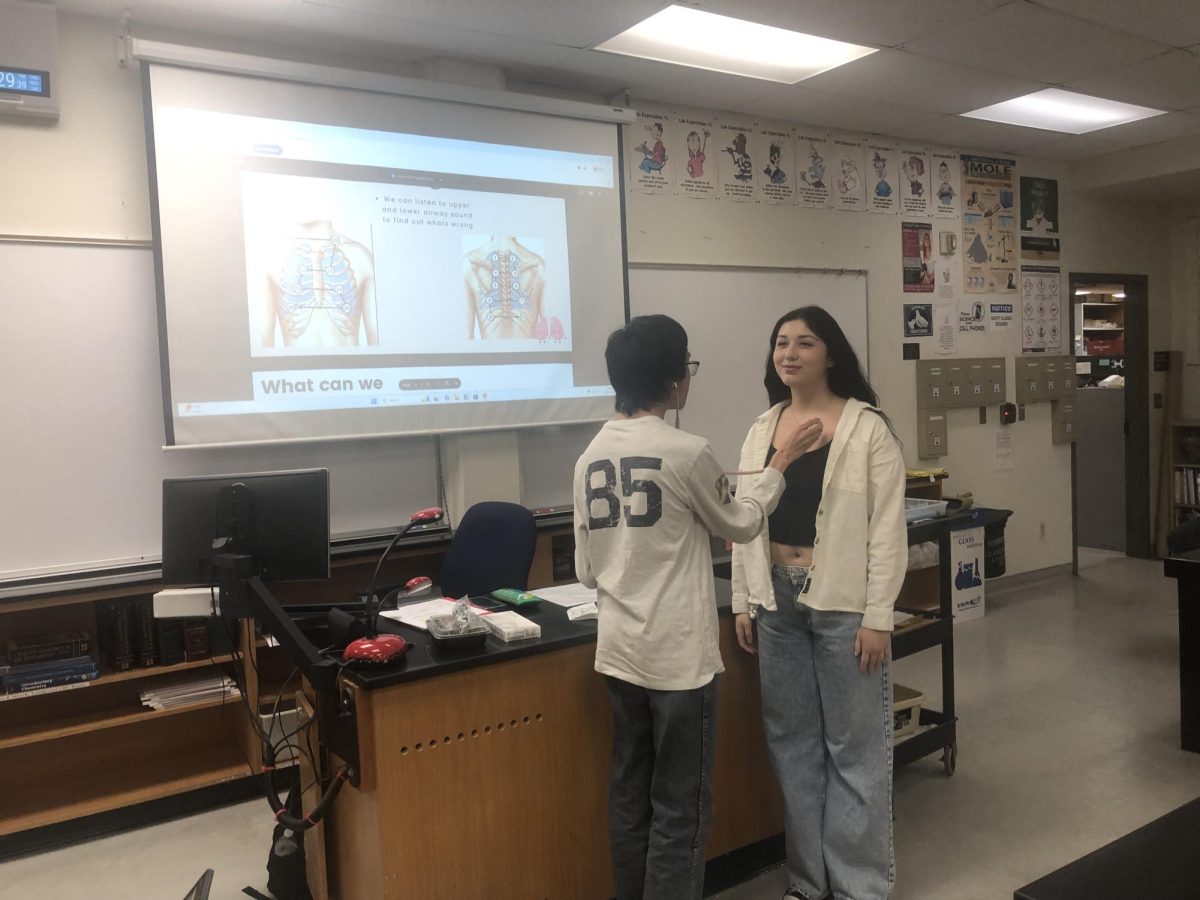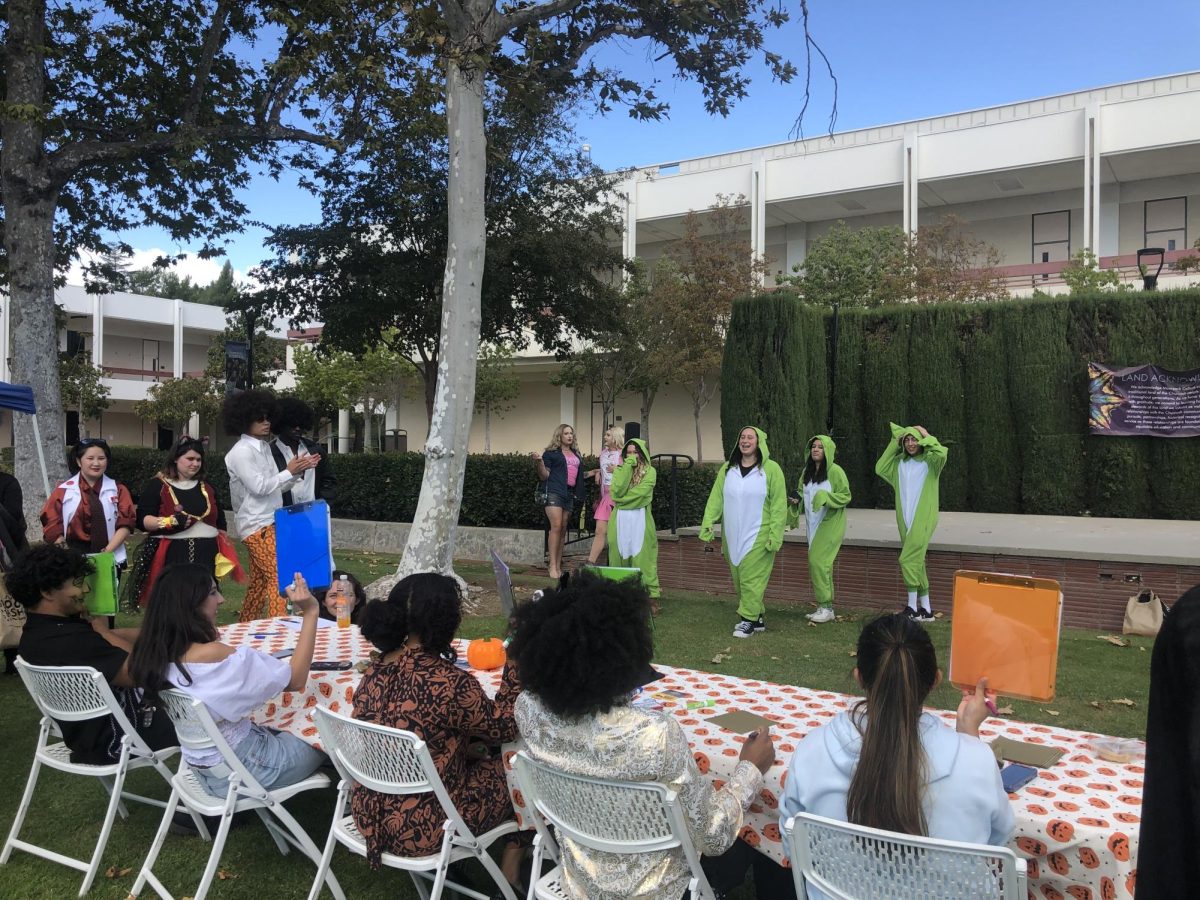“Barbie” and “Oppenheimer” are two films of contradictory subjects that, despite their differences, have found common ground in the wake of their release.
Both Greta Gerwig’s “Barbie” and Christopher Nolan’s “Oppenheimer” were released on July 21, 2023, but even before their release, the two films had been blended into a singular cultural phenomenon that has affectionately become known as “Barbenheimer.”
Angela Castillo, a second-year student at Moorpark College, explains that the success of both “Barbie” and “Oppenheimer” stems directly from social movements created online.
“[The films] have become so successful because of the buzz they created around social media, and the fact that fashion was incorporated into the trend,” Castillo says.
A multitude of people ranging across all ages have put together movie-watching groups to view both “Barbie” and “Oppenheimer,” often on the same day, with some wearing suits as an homage to “Oppenheimer,” and some dressing in pink attire in reference to “Barbie.” This affair has become a trend since the release of the films over the summer.
However, following one’s consumption of the two films, it is clear that they each harbor a deeper implication than they convey on the surface. FTMA Professor Nicole Block weighed in on “Barbie” and the film’s rendering as advisor of Moorpark College’s Film Club.
“‘Barbie’ is compelling and brilliant,” Block states. “Director Greta Gerwig flipped the narrative so that the ‘Kens’ went unnoticed and were disrespected in the ‘Barbie’ world, but women are the ‘Kens’ of the real world.”
The dynamic between ‘Barbies’ and ‘Kens’ in “Barbie” ostensibly helps men understand how women are treated normally. In “Oppenheimer,” men and women assume their real-life positions again.
“Men are respected and women are treated like ‘Kens,’” Block explains. “’Barbie’ and ‘Oppenheimer’ have been paired up in our culture because ‘Barbie’ is the answer to ‘Oppenheimer’’s world.”
With her experience in motion picture production, Block commends both Greta Gerwig and Christopher Nolan.
“They each built their own worlds within their films that played into the stories they were telling,” Block says.
She also notes Nolan’s incredible use of sound, or lack thereof, in “Oppenheimer,” namely during one scene concerning the subject of the film, J. Robert Oppenheimer.
“[Oppenheimer] is thinking about the people who were killed and the people he silenced, and the audio goes silent,” Block explains.
Both “Oppenheimer” and “Barbie” were constructed purposefully and beautifully to convey impactful messages.
Rightfully, the two films each boast impressive accomplishments following their debut. “Oppenheimer” has reached $853.5 million at the box office, including $542.8 million outside of the United States, according to Box Office Mojo by IMDb Pro.
Smithsonian Magazine reports that “Barbie” has become the first movie directed only by a woman to gross $1 billion at the box office. The film has now earned $1.38 billion, with $771.9 million outside of the United States. Both “Barbie” and “Oppenheimer” have gained international fame since their release.
Variety Magazine predicts that both films will be nominated for best picture in the 2024 Oscars. The magazine also projects that “Barbie” will be nominated for best original screenplay, “Oppenheimer” for best adapted screenplay and both Greta Gerwig and Christopher Nolan will be nominated for best director.
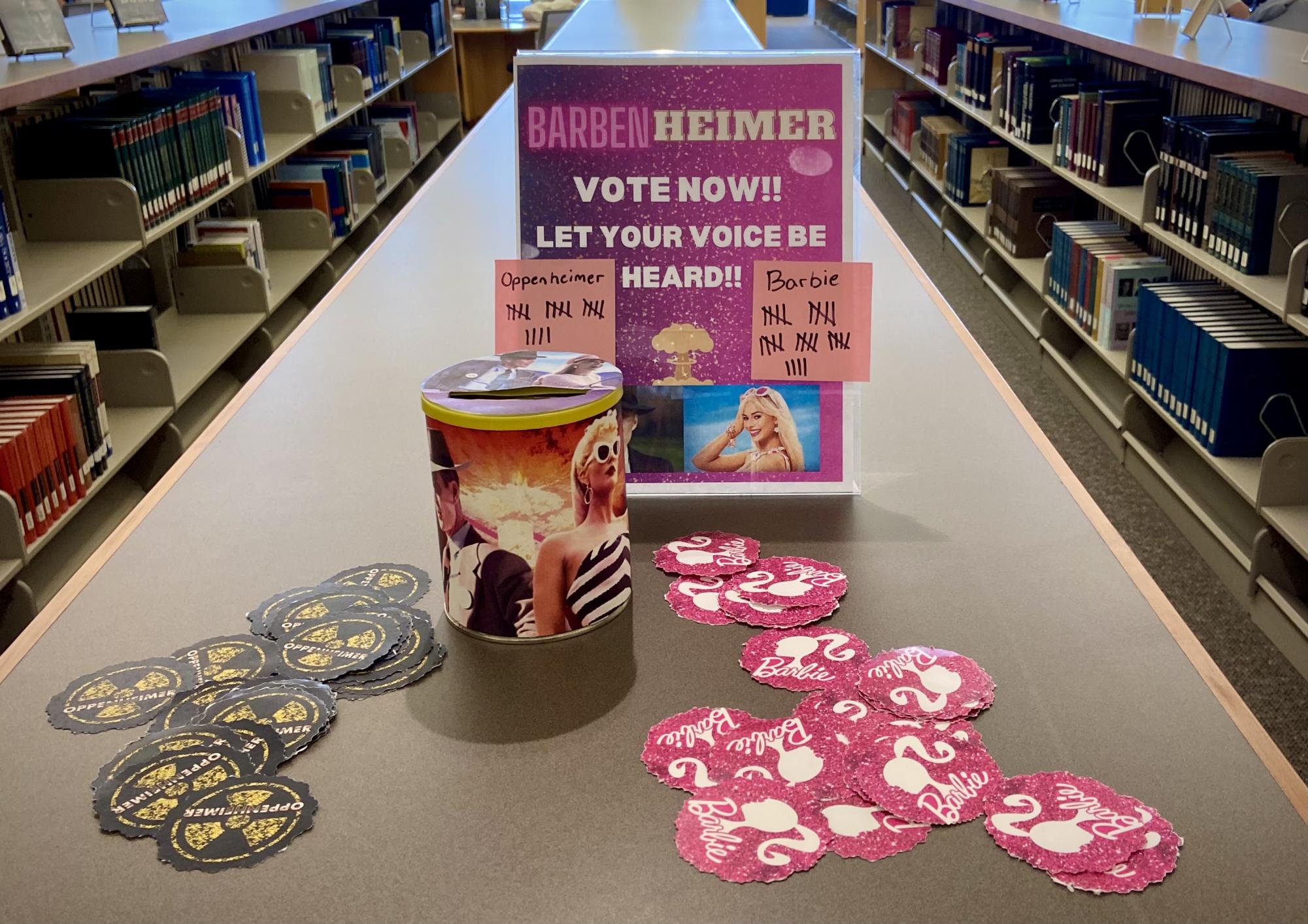
“Barbie” and “Oppenheimer” are so popular that the Moorpark College Library features multiple works referencing the “Barbenheimer” movement. A collage has been presented on the main floor of the library which reflects the highlights of both films, perfectly blending their opposing themes, as well as noting the similarities between the films.
The campus library also features an interactive piece that encourages students to vote for the film they prefer most. Tokens labeled “Barbie” and “Oppenheimer” are available to be selected and dropped into a container as a means to submit one’s vote. The votes are counted and represented as tally marks next to the “Vote Now!!” prompt.
Leo Woronov, a student at Moorpark College, states that he preferred “Barbie” over “Oppenheimer” and would rather watch “Barbie” due to its lighter themes in comparison with “Oppenheimer.”
“If I were to vote between the two movies for best picture in the Oscars though, I would vote for ‘Oppenheimer’ because it’s a higher quality film, and the cinematography cannot be topped.”
“Oppenheimer” employs dramatic cinematography in order to share an understanding of patriarchy and “unchecked bureaucracy” with its audience. Although “Barbie” is camouflaged as a comedy, the film communicates an important message about feminism and the patriarchal society as well.
On the surface, the two pictures may seem contradictory, but their darker themes blend together in such a way that each film adds a greater perspective to the other’s narrative.

